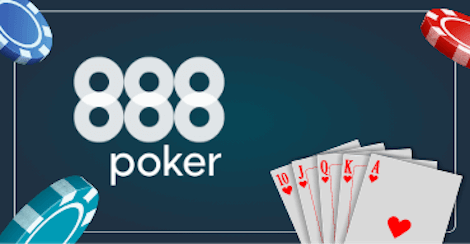Poker has been a favourite pastime of many for a long time. The core game, 5-card draw poker, is one of those games as old as time. Many people will think of it as the game of the outlaws in the American West, not realising that its origins could be traced much further back, even as far as the Persian game called As-Nas. With that said, it’s the modern 5-card draw that became synonymous with back-door venues filled with cigarette smoke, where shady players would stake their livelihood on a good hand.
As the game evolved from playing with 20 cards to including a whole deck, many new versions of draw poker games appeared on the gaming scene. Some of the most popular ones are Texas Hold ’em and Omaha poker.
Still, many people love hosting a traditional poker night rather than going for another variant. And while it is unlikely that casinos in Vegas will have many game tables with traditional poker on-premises, some online casinos will allow you to play the original game.
The Basics of 5-card Draw
Understanding the five-card draw basics is relatively simple. Players place initial bets and get their first five cards. After seeing what they have, they put their bets or fold. Then comes the “draw part,” as each player specifies how many cards they would like to discard and replace from the deck. After that, a new betting round begins and lasts until the players reach a showdown – the part where they have to show their cards. The luckiest or most skilled player will then take home the prize, while the others will lose their bids.
Now, let’s see how to play this game step by step and learn some useful poker lingo while we’re at it.
How to Play Five-card Draw Poker
The game starts with placing the initial bets. These are typically called “blinds,” mainly because you place them even before seeing the cards. Blinds are also known as “antes.” Which term will be used, how much you will initially have to place, and how the game will work usually depend on the agreement between players before the actual play session starts.
Typically, the player to the dealer’s immediate left will place the “small blind”. Then, the player to that player’s left will post the “big blind” for twice the amount of the small one.
Next, it is time for the dealer in the draw poker game to shine. The dealer will deal one face-down card to each player, starting from the left and going in the clockwise direction until all the players have five cards in their hands. After that, the first betting round between all players at the table begins.
The player on the left from the big blind acts first. The options here are giving up or “folding,” betting the same amount as the big blind or “calling,” or they can “raise” it and bet the higher amount than the big blind. The other players, in a clockwise manner, can do the same.
Now, it’s time to draw. The small blind goes first. They select which cards they would like to get rid of and replace them with new ones. The dealer will replace the cards for each player accordingly.
As the next step in our “draw poker step-by-step guide”, the spotlight is back on the small blind. This player can “check,” which means passing the action to the next player while keeping their cards, or “call.” The action continues clockwise until the final player folds or calls.
If at least two players are still standing, the game moves to the most enticing part – showdown. Here, the remaining players show their hands, and the winner is determined by the strength of their cards. These are shown through the so-called “traditional rankings”.
What Are The Traditional Rankings?
The most substantial hand will always be the “Royal Flush,” five cards in a row within the same suit, starting with a ten and ending with an ace. “Straight Flush,” or five cards in a row within the same suit follows, then “Four of a kind.” According to the 5-card draw poker rules, “Full House,” three cards of the same value and another pair in a different suit is weaker than “Four of a Kind,” but stronger than a “Flush,” which is five cards of the same suit. A “Straight,” or five cards in a row but in different suits, is next.
You can also have “Three of a Kind,” which will beat “Two Pairs”, which are, of course, stronger than “One Pair.” The weakest set of cards you could have is “High Card,” which is a hand that doesn’t follow either suit or value. However, it can be compared to another player’s “High Card” by value. If you have a stronger high card – you win.
How Does Betting Work in a 5-Card Draw Poker?
Betting in this type of game also depends on the agreement between the players. However, some of the most common bet types are “limit,” “pot-limit,” or” no-limit.”
In “limit” games, all bets are fixed upfront, and there isn’t any room to manoeuvre. “Pot-limit” games allow you to place any amount you’d like, but it must not exceed the current pot size. The last type, “no-limit,” lets you bet your whole current stack if you’d like – as its name suggests, there are no limits with this type of bet.
Are There Other Draw Poker Game Types?
These days, many players prefer more modern takes on poker. The traditional game is relatively slow for many, and it is tough to improve your starter hand, leaving much to luck rather than skill. With that said, there are variants of 5-draw too, so let’s take a look at a few of the most popular ones:
Badugi
Badugi is a relatively new game, yet the poker community embraced it very quickly. In this variant, you only receive four cards in the beginning. The goal is to avoid having cards with identical suits in your hand. You’re not only avoiding the flush but also keeping in mind that if you have even two cards with the same suit, the highest-scoring one won’t count.
Lowball Draw Poker
Lowball is an interesting variant of the game, with the main rule being – the worst hand wins.
Typically, you have two types of lowball poker. California lowball, where the winning combination is ace to five (A-2-3-4-5). The other is Kansas City Lowball, also known as Deuce to Seven Lowball, or just “Deuce.” The latter is played exactly the opposite of traditional rankings: ordinarily challenging to obtain and valuable hands such as straights and flushes will be detrimental to your success here.
Badeucey & Badacey
These two are split-pots games, meaning that not only can you win or lose, but you can also win “half” of the pot with your hand.
Typically three-draw poker games, there are two differences between them. In Badeucey, you are looking at deuce to seven lowball hand rankings, while Badacey uses ace to five lowball hand rankings. These rankings count for half the pot. The other half is based on Badugi, and you can win it if you have an excellent Badugi hand – no identical suits.
Archie
Archie is another three-draw variant that recently took the spotlight, mainly in Phoenix and Vegas. This variant is played high and low, and the pot is split between the best hand and the worst hand. Seems simplistic? The fun part is – both hands have to qualify to have a chance for half the pot. High hand players in Vegas have to get a pair of sixes, while those in Phoenix need at least nines. Low hands, meanwhile, require an eight-low or better.
Drawmaha
The newest variant, which stems from crazy party games, is a mixture of Omaha and classic poker 5-card draw. These days it is played both live and online.
The pot in this type of game is split into two parts: half goes to the best five-card draw hand, and the other half to the best Omaha hand. It is a one-draw game.
Quick Tips Before You Buy-In at the Next Game
To achieve any of the stronger hands, you need a lot of luck and some skill. For example, knowing which cards you’ve received in the first round should be discarded is essential to any winning strategy.
Playing sensibly is the key. You might be tempted not to have any 5-Card draw strategy
and instead go at it Hollywood-style, trying to bluff your way through the game with the weakest hand. However, this will likely result in you losing your bankroll or buy-in rather quickly instead of helping you win.
Try to, instead, be mindful of your starting cards. If you have a “High Card,” discarding it won’t help you get a “Royal Flush.” Keeping a high card or two in your hand and discarding the rest might be a better option. Knowing your odds can also be helpful, so make sure to familiarise yourself with the statistical odds of certain hands depending on your held cards. Don’t let stats rule your game, though, but keep them in mind if you want to play hazardous moves.
Paying attention to your opponents is also crucial when playing draw poker. Figuring out their playing styles as soon as possible can be helpful to be able to guess their cards and move better. Keeping track of how many cards they discarded in a draw can be an important insight, too: if they tossed two, they could have a “Three of a kind” already or are hoping for a type of “Flush.”
Finally, remember that folding is a valid strategy if you have a weak hand.
FAQ
What does a draw mean in poker?
In poker, a draw typically means a solid hand that could be improved, such as a pair that could lead to three-of-a-kind. The term also applies to drawing new cards from the deck to replace the cards you have in hand, which is one of the Five-card draw basics.
How often do you hit a flush draw?
The chances of having a flush depend on many factors but are always below 1%. For example, your starting odds are around 0.2%. If you don’t have any suits in your starting hand, the chances drop to zero, while if you have a suited starting hand, your odds climb to 0.8%.
How many draws do you get in poker?
The number of draws in poker depends on the type of draw poker you’re playing. You typically have one draw with a five-card game, but some of its derivatives feature three instead.





